DBpedia Extraction
Introduction
DBpedia was born in 2007 from the collaboration of the Mannheim University, the Free University of Berlin, and the software editor OpenLink. The goal of the project was to query the Wikipédia content as a database through the semantic web standards. Originally made for extracting the English Wikipedia, it was extended to numerous languages, DBpedia is one of many examples of this.

From Wikipedia to DBpedia
Wikipedia articles are structured pages : an article is firstly described by a title, can contain homonyms, links to others' linguistic versions, and can contain geo-coordinates.
Beside the body of it generally contains : an abstract, a table of content, and links... You may also have noticed two types of special inserts : one dedicated to the categorization, and the other called the infobox. This regularity of structure is the ground of DBpedia. Let's illustrate that by the example of the Paris Wikipedia article :
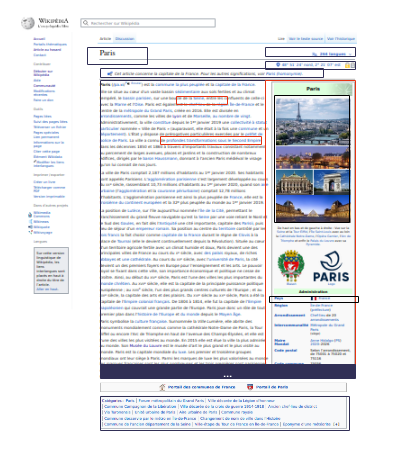
The wikicode
Behind each article is hidden a code called the Wikicode. Every Wikimedia Foundation project employs this markup system. To learn more about its syntax, visit the the dedicated Wiki Help page. This language manages the article layout and could also load data via Lua scripts.
For discovering the wikicode of a page, you need to click on the "Edit" tab on the top of an article. It will give you the following result for the Paris article:
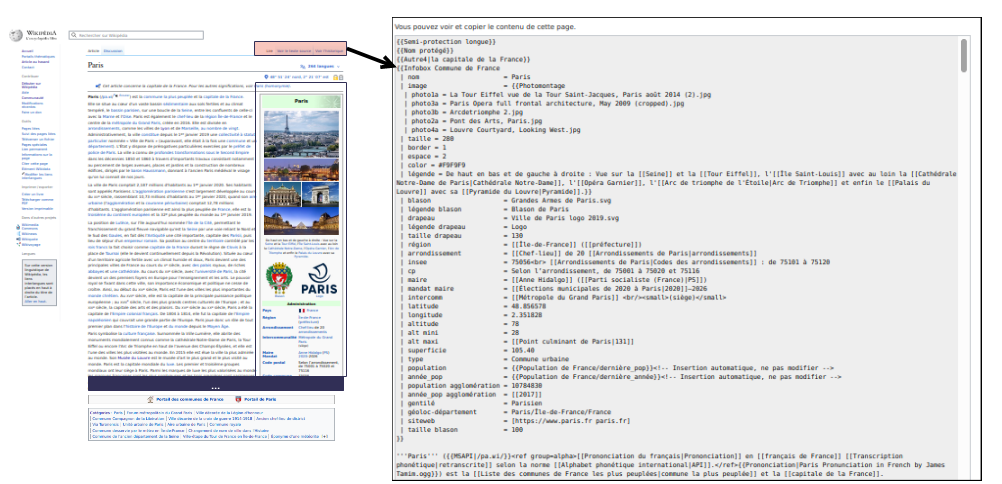
The infobox
The infobox is the insert situated at the top right of an article. This one is very important, because it allows you to quickly figurate what is the topic of an article. It exists plenty of infoboxes : one for each type of object that Wikipedia can describe (art, culture, biography, law concept, economy, management, media, military, politics, science, logistic...). These inserts are determined by the Wikipedian community for each linguistic chapter. You can find here the complete list of infoboxes related to Wikipedia Fr.
Each infobox allows summarizing the content of an article according to the properties attributed to the same type of article. On the side of the wikicode it equates to defining or not values for each potential field of the template used :
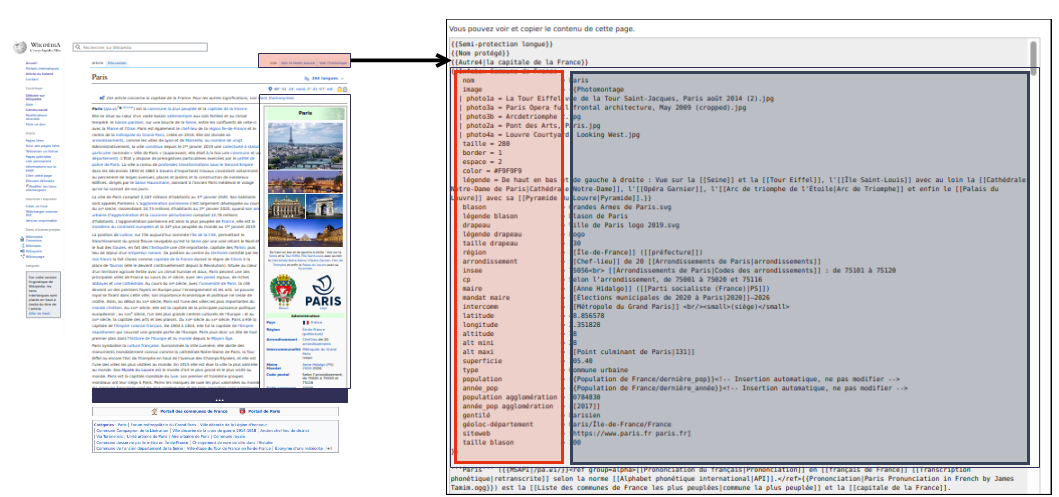
The Wikipedia article of Paris contains the Commune de France infobox, hich allows attributing to a city the name of its region, an insee code, a postal code, a mayor, an altitude, a surface, a population... These informations are in our example well filled in.
The DBpedia Ontology
The DBpedia ontology lists and describes the concepts and the object that is possible to find on Wikipedia (classes), as well as the relation that can be employed for associating (properties). The classes are hierarchically organized, you can understand it by exploring this page that represents the organization of the DBpedia classes between them. They are defined in a web semantic format : le format owl. This is possible to contribute to the enrichment of classes and properties. If you wanna do it, please refer to the article "How can I contribute to DBpedia Fr ?" of our documentation.
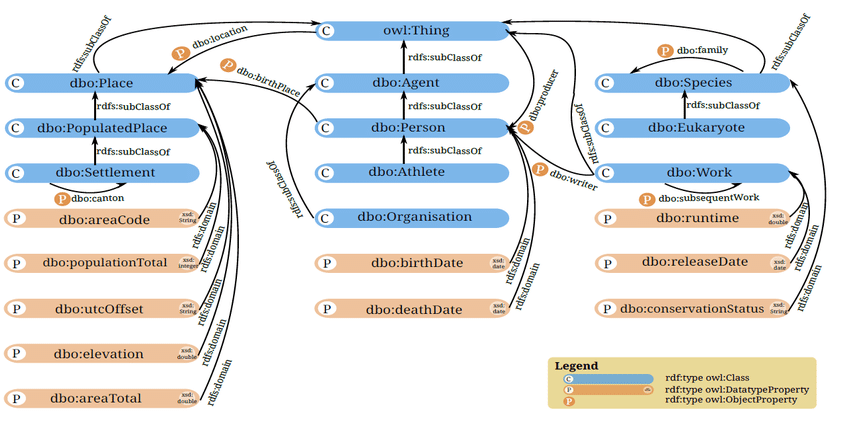
Concerning our example, by searching into the DBpedia ontology, we can imagine that Paris could be related to the class Settlement.
Mappings
You understood that the Wikipedia articles can be classified and described on the basis of the infoboxes that they contain. It is what is doing DBpedia, by aligning them via the collaborative wiki of DBpedia, previously presented. Where the DBpedia contributors have defined the type of each infoboxe object and attribute to each infobox property a DBpedia ontology property.
As for the ontology, this is possible to contribute to the definition of the french mapping. If you want to invest yourself into this task, in addition to the "How can i contribute to DBpedia Fr ?" article, we recommend you read the "How to create a mapping ?" article of our documentation.
Take a look at the infobox of Commune de France related to Paris article :
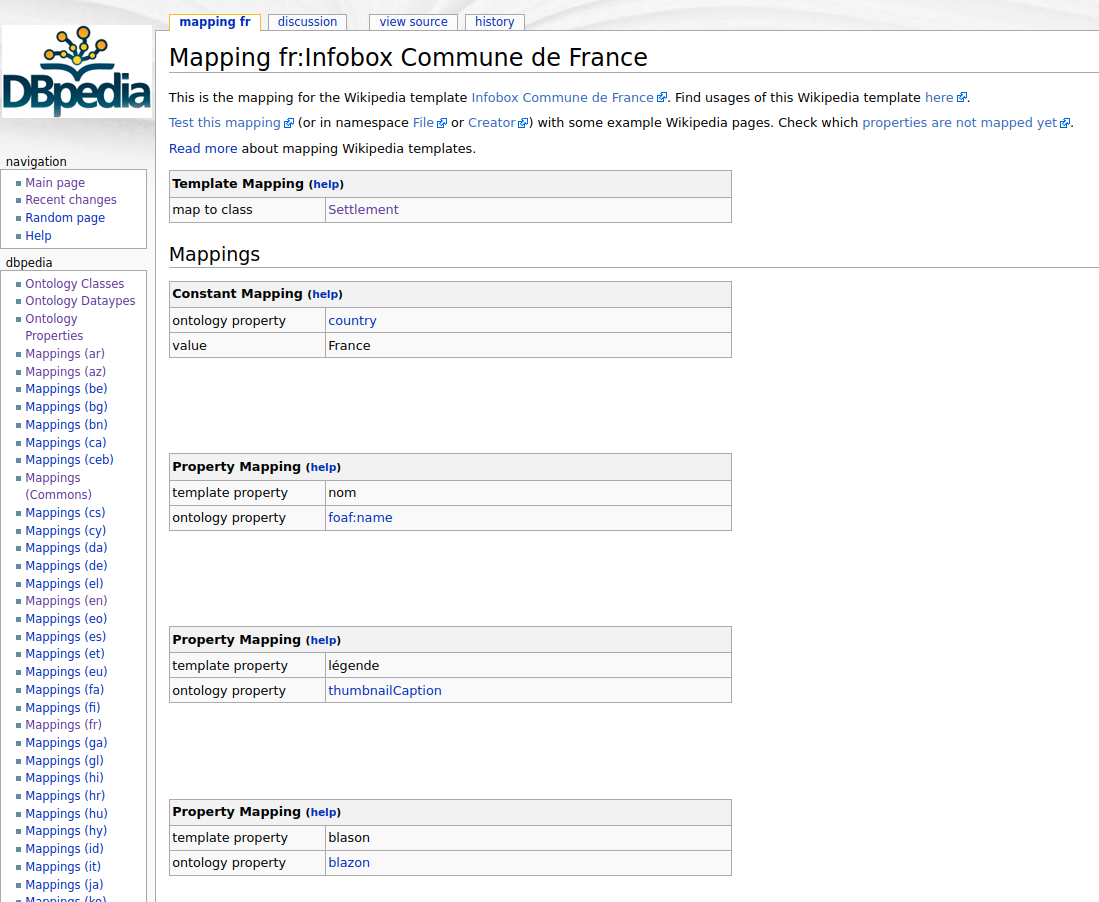
DBpedia extraction framework
The DBpedia extraction workflow is conducted by an open-source software platform to which it is also possible to contribute. This one is written in Java and Scala and is available on this github repository.
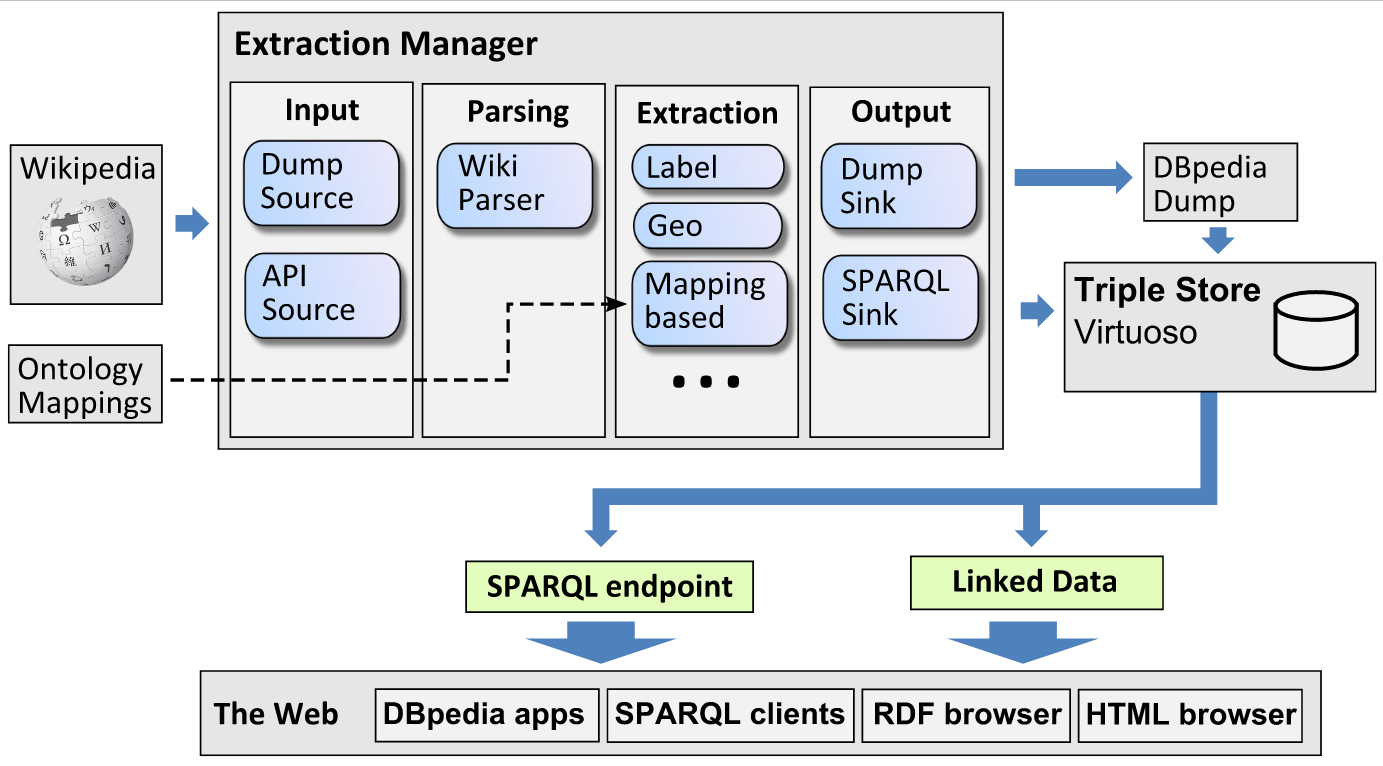
This one bases the extraction on the dump delivered by the Wikimedia Foundation. These archives contain all the articles of a given linguistic chapter of Wikipedia formatted in wikicode. The DBpedia framework scans an entire dump and performs four types of extractions :
- generic extraction (made directly on the wikicode)
- mapping based extraction
- text extraction
- wikidata extraction
Generic extractors
The generic extractions are conducted directly on the wikicode :
- ArticleCategoriesExtractor : article category as defined in the bottom insert of this one
- CategoryLabelExtractor : retrieve the category label in the current language
- TopicalConceptsExtractor : extract the categories and the sub-categories of a page following the following template "http://fr.dbpedia.org/resource/Catégorie:Nom_Page"
- SkosCategoriesExtractor : extract and format the categories tree
- ArticlePageExtractor : extract all the Wikipedia pages contained in an article, could be used for working on the article network
- ArticleTemplatesExtractor : identity all the Wikipedia templates employed in an article, typically used for working on template mapping
- ExternalLinksExtractor : allows to extract all the external links inside an article
- GeoExtractor : retrieve all the geo-coordinate formatted by a coordinate template contained in an article.
- InfoboxExtractor : extract raw data contained in the infoboxes without mapping.
- InterLanguageLinksExtractor : extract the links of the same article available in another language listed into a Wikipedia article.
Caution :the Wikidata initiative tends to manage the interlinks, so this extractor will become obsolete over time. - LabelExtractor : title of the Wikipedia article
- PageLinksExtractor : DBpedia resources included in the article
- RedirectExtractor : rlists all the redirects from an old Wikipedia article name
to its new name : See an exampke - HomepageExtractor : find with a regexp the potential official websites included in a Wikipedia article
- WikiPageLengthExtractor : give the number of characters contained in an article
- DisambiguationExtractor : extract all the homonyms referenced by a homonym template
- ImageExtractorNew : extract the image included in an article
- RevisionIdExtractor : get the version number of the article extracted
- ProvenanceExtractor : extract only the version number of the extracted article
- PageIdExtractor : return the Id corresponding to a Wikipedia article
Mapping-based extractors
These extractors are parsing the syntax of the mapping defined here. Explaining how they are working is not informative. For understanding how this transformation is conducted, please refer to the mapping guidelines and explore the mapping defined for DBpedia Fr.
- CalculateMapping
- CombineDateMapping
- ConstantMapping
- IntermediateNodeMapping
- MappingExtractor
- SimplePropertyMapping
- TableMapping
- TemplateMapping
- TypeConsistencyCheck
Text extractors
Two extractors allow the text retrieval :
- PlainAbstractExtractor : use the official MediaWiki API for obtaining the text as displayed on the article
- HtmlAbstractExtractor : use the official MediaWiki APIfor extracting the extract copy of HTML version of the article
Wikidata extractors
Since 2014, DBpedia extracts also data coming from Wikidata and offers mapping the Wikidata properties with the DBpedia one.
- WikidataRawExtractor : used for formatting the Wikidata dump as simplified triplets. The result of this extraction is the ground of all the other wikidata processes.
- WikidataSameAsExtractor : extract all the sameAs links of Wikidata - internal and external Wikipedia resources
- WikidataR2RExtractor : transpose all the Wikidata properties into DBpedia properties, based on the owl:equivalentProperty in the DBpedia Wiki (see example of the BNFid), ) and on this mapping file.
- WikidataLLExtractor : transform the concerned resource as inter-DBpedia links.
The databus
The DBpedia association process regularly a complete extraction of Wikipedia over 140 languages, which it hosts on the Databus
CHowever, each chapters does not have a Sparql endpoint. Please find here the complete list of the available DBpedia enpoint.
For the moment, the French DBpedia chapter mainly rely on data selection coming from the Databus. We are structuring these data with named graphs, we are computing a large number of statistics on it and we reshaping the Wikidata triples. For more information about it, please read the article "DBpedia Fr structure".